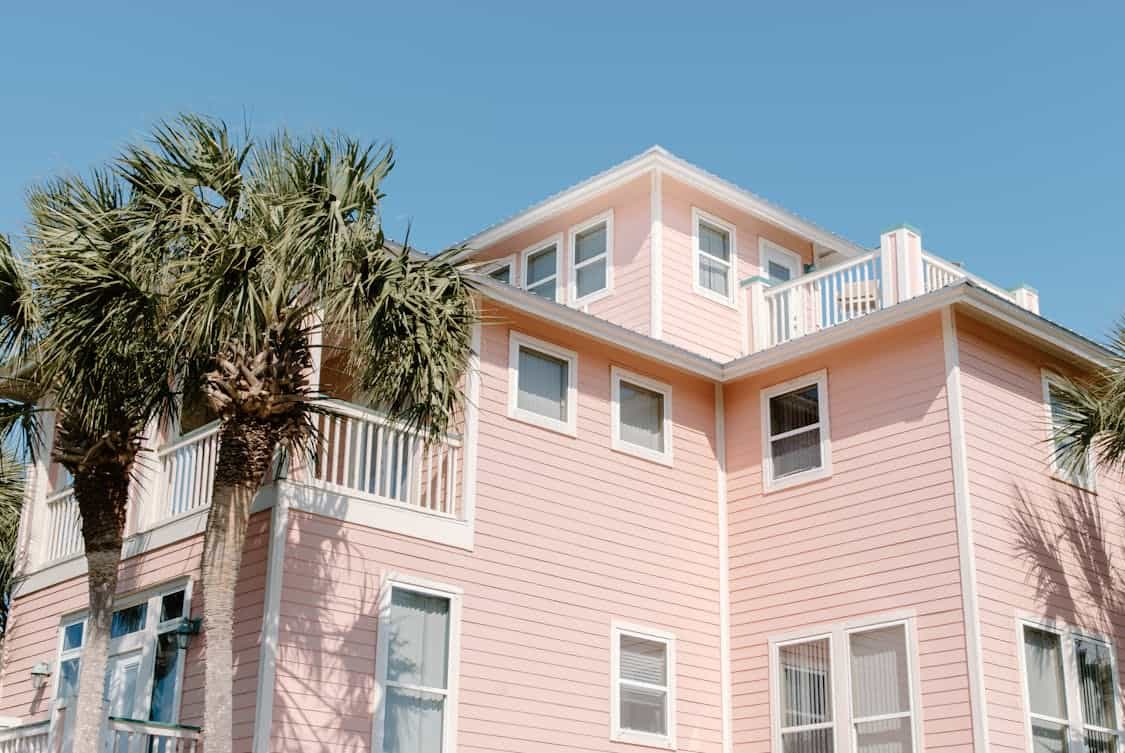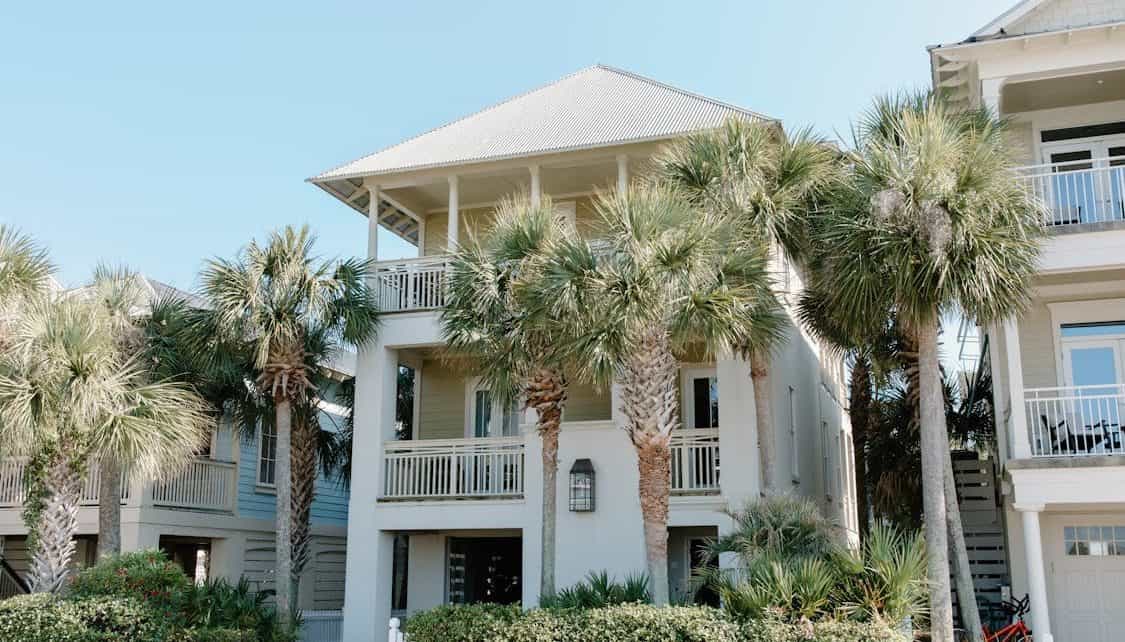Living by the coast often brings to mind sun-soaked days and the refreshing sound of waves. Yet, there’s more to coastal homes than just picturesque views.
These homes have an innate ability to stay cool, even during the height of summer. Let’s explore the various elements that contribute to this pleasant climate.
Architectural Design
Coastal homes are usually designed with specific architectural features that enhance ventilation. High ceilings and open floor plans allow air to circulate freely, minimizing heat buildup.
Large windows not only invite natural light but also promote cross-ventilation. This means that as warm air rises, cool air from lower areas can flow in, creating a natural cooling effect.
Roof Overhangs and Eaves
The design of roof overhangs plays a significant role in maintaining a comfortable temperature inside. Extended eaves protect windows from direct sunlight during the hottest parts of the day.
This shading keeps the interiors cooler while still allowing ample daylight to filter in, balancing light and temperature effectively.
Materials Matter
The materials chosen for coastal homes also significantly influence their temperature control. Many coastal buildings use light-colored materials that reflect, rather than absorb, sunlight.
This helps prevent overheating. Additionally, insulating materials can keep the cool air inside while resisting the heat from outside.
Natural Ventilation
The strategic placement of windows and vents allows for natural airflow throughout the house. When designed properly, these openings can create a breeze, drawing in the cooler air from the ocean side.
This passive cooling technique reduces the need for artificial air conditioning, leading to lower energy bills and a smaller carbon footprint.
Landscaping Techniques
Landscaping plays a crucial role in how cool a coastal home feels. Trees and shrubs, when strategically placed, can provide shade and help lower temperatures around a building.
Additionally, native plants often require less water and can thrive in coastal conditions, making them a sustainable choice for homeowners.
The Importance of Ground Cover
Ground cover plants help keep the soil cool and can reduce heat radiation. These plants not only enhance the aesthetic appeal of the property but also serve as natural insulators.
Installing paths or patios made from cool materials, like stone or shaded decking, can further enhance the home’s temperature regulation.
Proximity to Water
Living near the ocean has its perks beyond scenic beauty. Bodies of water tend to moderate temperature fluctuations. The ocean absorbs heat during the day and releases it at night, which helps keep coastal areas cooler overall.
This natural phenomenon means that coastal homes benefit from more stable temperatures, contributing to a comfortable living environment.
Sea Breezes
The interaction between the land and sea creates refreshing sea breezes. These winds can drastically reduce temperatures on hot days, providing a natural cooling mechanism for coastal homes.
Windows and doors open to the ocean can help channel this breeze into the living spaces, enhancing comfort without relying on electrical cooling systems.
With clever window placement and open-plan layouts, homeowners can further channel these cooling breezes through living spaces, ensuring consistent airflow throughout the day.
Orientation of the Home

The orientation of a coastal home can significantly impact its internal climate. Homes facing the ocean typically enjoy the benefit of cooling sea breezes.
Meanwhile, those facing inland may be more subjected to heat buildup. Proper orientation not only maximizes views but also takes full advantage of the natural cooling effects of the coastal environment.
Sun Path Considerations
Understanding the sun’s path can help in positioning the house and its windows for optimal sunlight exposure. By minimizing direct sunlight during peak hours, homeowners can reduce the heat inside.
This can be achieved through thoughtful design, ensuring that shaded areas are plentiful, especially on the western side of the home, which is more exposed to afternoon sun.
Innovative Cooling Solutions
While traditional methods are effective, some coastal homes incorporate innovative cooling solutions. For instance, solar panels can power fans or cooling systems that contribute to a home’s temperature regulation.
These technologies work harmoniously with natural cooling methods to ensure a consistently pleasant environment.
Thermal Mass
Some coastal homes utilize thermal mass, which involves materials that absorb and retain heat. This can help regulate temperature fluctuations throughout the day.
For example, concrete or stone floors will stay cool during the day and release that coolness at night, keeping the home comfortable.
Adaptive Interiors
The interior design of coastal homes often reflects the environment’s cooling qualities. Light, airy fabrics for curtains and furniture not only speak to the coastal aesthetic but also help enhance the feeling of coolness.
Natural materials like wood or stone can also contribute to a cooler atmosphere, complementing the external conditions.
Strategic Use of Color
The color palette inside a coastal home can impact how cool or warm it feels. Light colors reflect light and heat, giving the illusion of a cooler temperature.
Shades like whites, soft blues, and pale greens can help create a serene, refreshing environment that echoes the surrounding coastal landscape.
Climate Considerations
Coastal areas can have varying climatic conditions, affecting how homes maintain their coolness. Homes in tropical regions might require different strategies compared to those in temperate climates.
Understanding the local climate and adapting home design accordingly is essential for optimal comfort.
Humidity Control
Humidity is a common factor in coastal living that can affect temperatures.
Homes built with proper ventilation systems can help control indoor humidity levels, preventing the muggy feel that often accompanies coastal air. Using dehumidifiers or proper air circulation can greatly enhance comfort levels.
Cultural Influences
The way coastal homes are built has evolved over time, influenced by cultural preferences and practices. Many coastal regions have their own traditional designs that have stood the test of time, fostering naturally cool living environments.
These designs often incorporate local materials and building techniques that naturally regulate temperature.
Community Practices
In many coastal communities, shared practices help maintain a comfortable living environment. Community knowledge about local plants, building styles, and energy-efficient technologies can benefit homeowners looking to create cooler spaces.
Engaging with neighbors and local experts can lead to practical and innovative solutions.
Local Regulations
Building codes and regulations can also influence how coastal homes are designed. Many coastal areas have guidelines aimed at promoting energy efficiency and sustainability.
These regulations can encourage the use of natural cooling methods, ensuring that homes remain comfortable without excessive reliance on artificial cooling systems.
Sustainable Building Practices
Sustainable building methods are increasingly popular in coastal regions. These practices not only help maintain a cooler interior but also promote environmental stewardship.
Using recyclable materials, efficient systems, and renewable energy sources can significantly enhance a home’s ability to stay naturally cool.
Weather Adaptation
Coastal homes are often built to withstand specific weather conditions, such as high winds and salt exposure. This durability contributes to their overall effectiveness in maintaining a cool environment.
By focusing on resilience, homeowners can enjoy comfortable living spaces without compromising safety.
Storm Resilience
Many coastal designs incorporate features that help homes stay cool while standing strong against storms. Elevated foundations and wind-resistant structures protect against flooding and damage, ensuring that the home remains a safe haven.
Such considerations are essential for long-term comfort in coastal living.
The blend of thoughtful design, natural materials, and adaptive strategies makes coastal homes a pleasure to inhabit. Their inherent ability to stay cool creates a unique living experience that combines comfort with environmental harmony.





